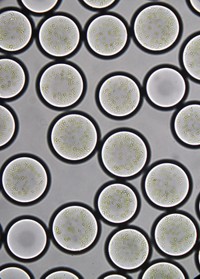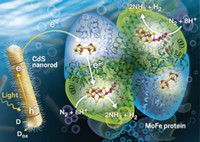Advertisement
Grab your lab coat. Let's get started
Welcome!
Welcome!
Create an account below to get 6 C&EN articles per month, receive newsletters and more - all free.
It seems this is your first time logging in online. Please enter the following information to continue.
As an ACS member you automatically get access to this site. All we need is few more details to create your reading experience.
Not you? Sign in with a different account.
Not you? Sign in with a different account.
ERROR 1
ERROR 1
ERROR 2
ERROR 2
ERROR 2
ERROR 2
ERROR 2
Password and Confirm password must match.
If you have an ACS member number, please enter it here so we can link this account to your membership. (optional)
ERROR 2
ACS values your privacy. By submitting your information, you are gaining access to C&EN and subscribing to our weekly newsletter. We use the information you provide to make your reading experience better, and we will never sell your data to third party members.
Synthetic Biology
Linking photosynthesis and hydrogen production in algae
Researchers make photosystem I hydrogenase hybrids to generate hydrogen in living systems
by Laura Howes
May 16, 2020
| A version of this story appeared in
Volume 98, Issue 19

As researchers look for sustainable alternatives to fossil fuels, one focus is clean-burning hydrogen. Hydrogen is often produced through steam methane reforming and electrolysis of water—energy-intensive processes associated with production of greenhouse gases. A climate-neutral approach needs to be based on renewable energy like sunlight. In the past, researchers have coupled photosystems or photosensitizers with hydrogen-producing catalysts in various ways, but now two separate groups report managing this feat in living systems, paving the way for organisms to produce hydrogen sustainably for as long as the cells stay alive. At Kiel University, Kirstin Gutekunst and colleagues genetically fused a hydrogenase enzyme to part of the photosynthetic machinery called photosystem I (PSI) in a Synechocystis cyanobacterium (Nat. Energy 2020, DOI: 10.1038/s41560-020-0609-6). Separately, Iftach Yacoby of Tel Aviv University and Kevin Redding of Arizona State University led a team that did something similar in Chlamydomonas reinhardtii (Energy Environ. Sci. 2020, DOI: 10.1039/c9ee03859k). Researchers say these studies lay important groundwork for developing living systems that can produce useful chemicals from light.




Join the conversation
Contact the reporter
Submit a Letter to the Editor for publication
Engage with us on Twitter